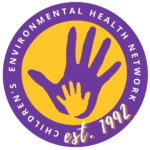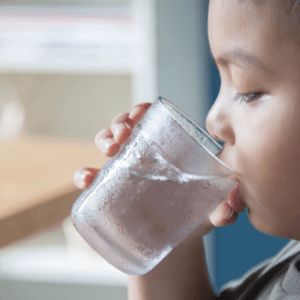EPA’s Lead and Copper Rule: Requirements for Schools and Child Care
CEHN raises awareness on the harmful effects to children from lead exposure, and we do our best to provide simple and low-to-no cost steps that families, care givers, and child care providers can take to reduce children’s exposure to lead hazards.
While lead-based paint hazards are the primary source of lead exposure to children in the U.S., lead in drinking water also contributes to a child’s body burden of the neurotoxic heavy metal, and is an especially important source for infants less than one year of age. The U.S. Environmental Protection Agency (EPA) regulates lead in publicly supplied drinking water through the Lead & Copper Rule (LCR), and in December of 2020, the agency finalized a revised LCR.
A new focus area has been added to this revised LCR—specifically the requirement to test the drinking water lead levels in elementary schools and licensed child care facilities. We applaud this recognition of early care and learning settings as important environments that may contribute significantly to children’s cumulative exposures.
However, the rule isn’t perfect. Community water systems are not required to test all taps used for consumption in schools and child care facilities, which could lead to missed hazards and a false sense of security. In addition, utilities are only required to test each elementary school and licensed child care facilitiy once during a 5-year testing cycle. Thereafter, testing would be by request only. Secondary schools must request testing, despite the fact that older children and adults, especially pregnant women, are harmed by lead exposures too. And the rule did not lower the lead “action level” in water, which at 15 parts per billion (ppb), is not a health-based standard. We know that there is no safe level of lead exposure. Thus, even if the few tested taps have lead levels below 15ppb, school and child care administrators should continue to adopt routine practices to reduce lead levels to as close as possible to 0ppb. Lastly, some schools and child care facilities have known lead service lines, which contribute the greatest percentage of lead to the tap. Full replacement of these lines should precede testing, in order to determine if internal plumbing fixtures are contributing to lead levels.
The Biden Administration put a regulatory freeze on the LCR before it went into effect. The rule is being reviewed, and it may end up being dismantled or changed. However, utilities and municipalities are already beginning to make plans to work towards compliance with the rule. It is important for cities, communities, school districts, and school and child care administrators to know about the rule and its implications, requirements, gaps, and opportunities in order to best protect children’s health.
In order to learn more about the LCR and its implications for schools and child care programs, make sure to register for our free townhall:
EPA’s Lead & Copper Rule: What Schools and Child Care Need to Know
April 21, 1:00 – 2:30 pm ET
This is the 2nd installment of our 3-part virtual townhall series on lead in drinking water, aimed to motivate the public health community to help accelerate the elimination of lead hazards in drinking water. You do not to be a public health professional to attend. Anyone interested in learning more about the LCR and lead in drinking water, please join us for the full series!









